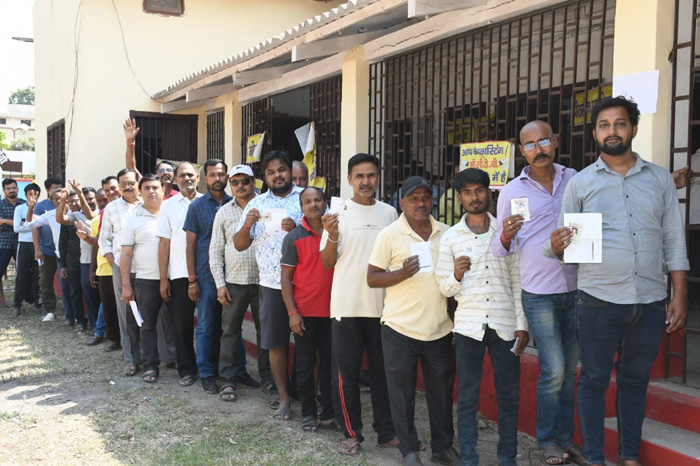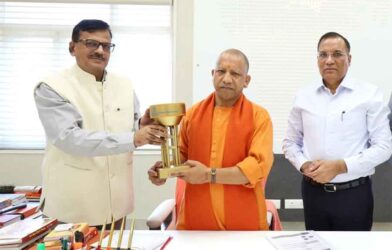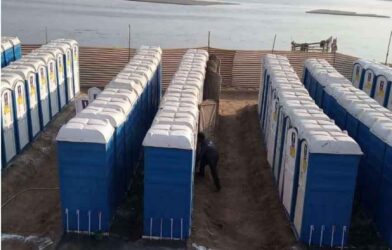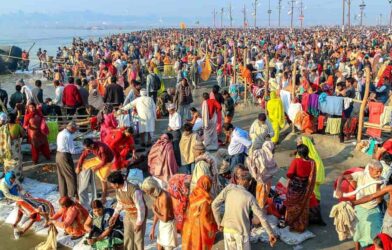The second phase of Lok Sabha General Elections 2024 concludes with a safe and secure environment for the voters
Extensive arrangements and security measures were ensured for fair and peaceful elections in UP
By Our Correspondent
Lucknow: The Chief Electoral Officer of the Uttar Pradesh, Mr. Navdeep Rinwa, informed that the second phase of the Lok Sabha General Election 2024 unfolded smoothly across 8 Lok Sabha constituencies in the state. These constituencies encompass Amroha, Meerut, Baghpat, Ghaziabad, Gautam Buddha Nagar, Bulandshahr, Aligarh, and Mathura.
According to data provided by district authorities, as of 5 pm, the overall voter turnout stood at 52.74 percent. This figure varied across constituencies, with Amroha recording 61.89 percent, Meerut 55.49 percent, Baghpat 52.74 percent, Ghaziabad 48.21 percent, Gautam Buddha Nagar 51.66 percent, Bulandshahr 54.34 percent, Aligarh 54.36 percent, and Mathura 46.96 percent. The electoral process proceeded without any notable disturbances, reflecting a peaceful conduct of the second phase of elections.
During a press briefing convened on the 7th floor of the Election Office, the Chief Electoral Officer elaborated on the measures taken to ensure the integrity of the second phase of voting in the state. Emphasizing the commitment to transparency and oversight, a comprehensive webcasting arrangement was implemented across 8852 polling stations, enabling real-time supervision at multiple levels, including the District Election Officer, Chief Electoral Officer, and the Election Commission of India. Additionally, videography was conducted at 967 polling sites to augment monitoring efforts.
Inclusive measures were undertaken to facilitate voting for specific demographics, with 9,746 eligible voters availing of postal ballots. This category encompassed individuals aged 85 and above, persons with disabilities, essential service workers, and polling personnel.
Special arrangements were made for home voting for elderly and disabled individuals opting for postal ballots, accompanied by micro observers and videographers to uphold transparency. Candidates were provided access to the polling schedule, allowing them or their representatives to witness the proceedings firsthand.
Furthermore, the list of eligible voters in this category was shared with candidates to ensure accountability. The entire process of postal voting was meticulously documented through videography.
Apart from this, postal ballots were also sent through electronic mode (ETPBS) by the Returning Officer to a total of 54,537 service personnel. EDC has been issued to 12,658 personnel.
The Chief Electoral Officer outlined the comprehensive deployment strategy devised by the Commission to ensure the integrity of the second voting phase. A total of 8 general observers, five police observers, and 12 expenditure observers were strategically positioned to maintain vigilant oversight.
Additionally, 1451 Sector Magistrates, 190 Zonal Magistrates, 222 Static Magistrates, and 1599 Micro Observers were deployed across various constituencies. At the state level, one Senior General Observer, one Senior Police Observer, and one Senior Expenditure Observer were appointed by the Election Commission of India to oversee operations.
During the voting process, several complaints were received via email from various political parties, promptly addressed by district officials, with responses conveyed through email correspondence. Paramilitary forces were aptly mobilized to ensure the peaceful conduct of elections, including the responsibility of safeguarding the EVM strong rooms.
Regarding logistics, arrangements were made for all 17,704 polling stations, including providing requisite EVMs and VVPATs. Adequate reserves of these voting machines were stored in different districts to address any contingencies. Technical issues during voting were swiftly rectified, with 24 ballot units, 213 control units, and 469 VVPATs replaced during mock polls. By 5:00 p.m., an additional 48 ballot units, 48 control units, and 208 VVPATs were substituted based on reports received from districts.













